EXPLORING NEW HORIZONS
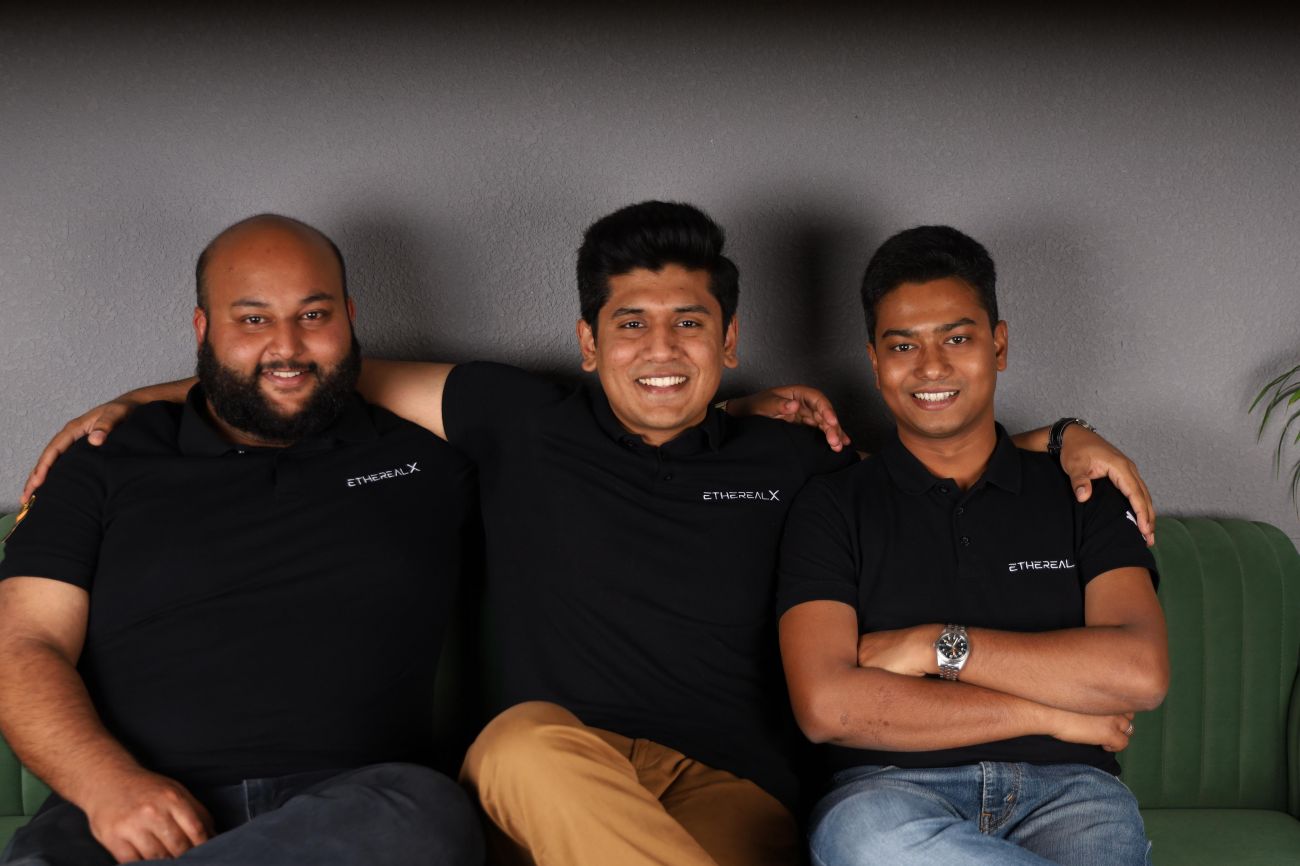
In this compelling conversation with MMI Editor-in-Chief Soumi Mitra, Manu J Nair, Co-Founder & CEO, Ethereal Exploration Guild (EtherealX), reveals what drove the bold leap into private space tech, the vision behind the company’s game-changing launch vehicle Razor Crest Mk-1, and the critical shifts India must embrace to elevate its position in the global space ecosystem.
From ISRO to EtherealX: What inspired you and your co-founders to take the leap into private space tech entrepreneurship, and how has the journey been since 2022?
It all began in January 2020 when I, Manu J Nair, met Shubhayu Sardar (Co-Founder & COO), during the final days of my university stint. I had the rare opportunity to work with ISRO’s Human Space Flight Centre as its first-ever R&D associate. Shubhayu, with nearly a decade at the organization, was assigned as my mentor. We clicked immediately—our problem-solving styles were different but deeply complementary. Working on the Life Support Systems for astronauts in microgravity together forged not just a productive work dynamic but also a strong personal bond.
Later in 2020, I joined Manastu Space as part of their executive team. That’s where I met Prashanth Sharma (Co-Founder & CTO) who led the propulsion division. Sharp, witty, and extremely resourceful, he brought a pragmatism that balanced our idealism. After helping Manastu close a multi-million-dollar overseas deal, I made the difficult choice to leave in January 2022 to pursue this larger vision. I brought Prashant with me to Bengaluru, where he met Shubhayu. The three of us spent the next six months researching, talking to domain experts, challenging our assumptions, and refining our approach.
Eventually, we reached a turning point—both in our conviction and clarity. We persuaded Shubhayu to take the ultimate leap of faith and leave his decade-long tenure at ISRO to join us. Our vision is straightforward: to catalyze civilizational progress by creating a multi-polar space launch access.
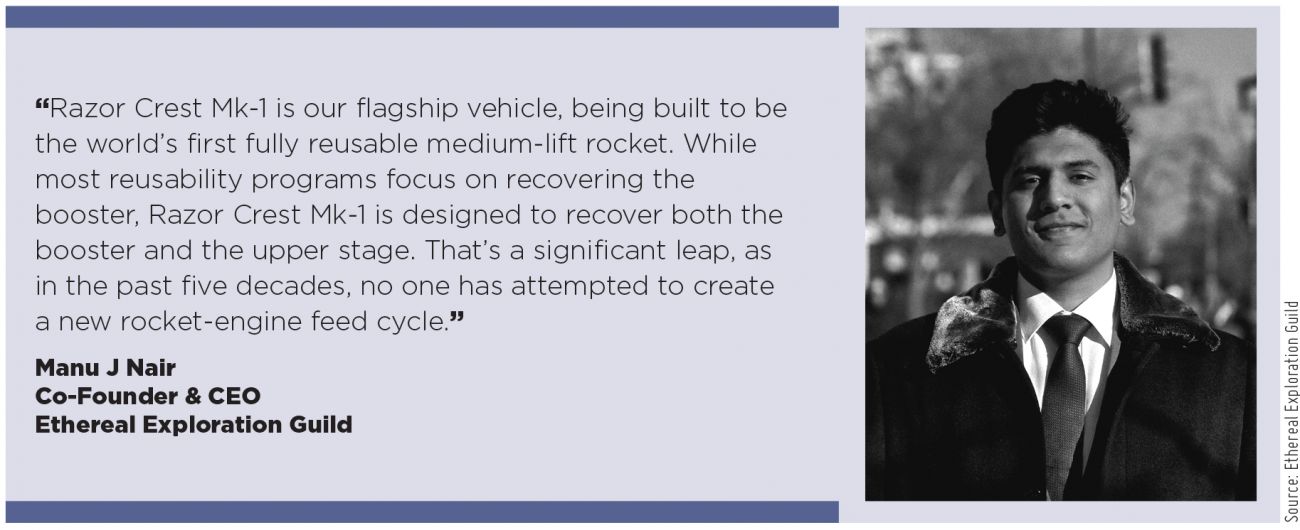
EtherealX is developing the world’s first fully reusable medium-lift launch vehicle. What makes Razor Crest Mk-1 a first-of-its-kind globally, and how does it compare with other reusable rockets on the market?
Razor Crest Mk-1 is our flagship vehicle, being built to be the world’s first fully reusable medium-lift rocket. While most reusability programs—including SpaceX’s Falcon 9, Rocket Lab’s Neutron, Blue Origin’s New Glenn, and ISRO’s NGLV—focus on recovering the booster, Razor Crest Mk-1 is designed to recover both the booster and the upper stage. That’s a significant leap, as in the past five decades, no one has attempted to create a new rocket-engine feed cycle.
|
India is on a strong upward trajectory. With the opening of the space sector, a new wave of private space companies has emerged, backed by progressive policy moves, like the establishment of IN-SPACe, liberalization of FDI norms, and clearer regulatory pathways around launch operations and satellite licensing. |
Its capacities to orbit in different configurations are: 24.8 tonne to LEO (expendable), 22.8 tonne to LEO (partially reusable), and 8 tonne to LEO (fully reusable).
You are targeting launch costs between US$ 350–US$ 2,000 per kilogram—almost 1/50th of the global average. What engineering or design breakthroughs are enabling this level of affordability, and how do you plan to sustain it commercially?
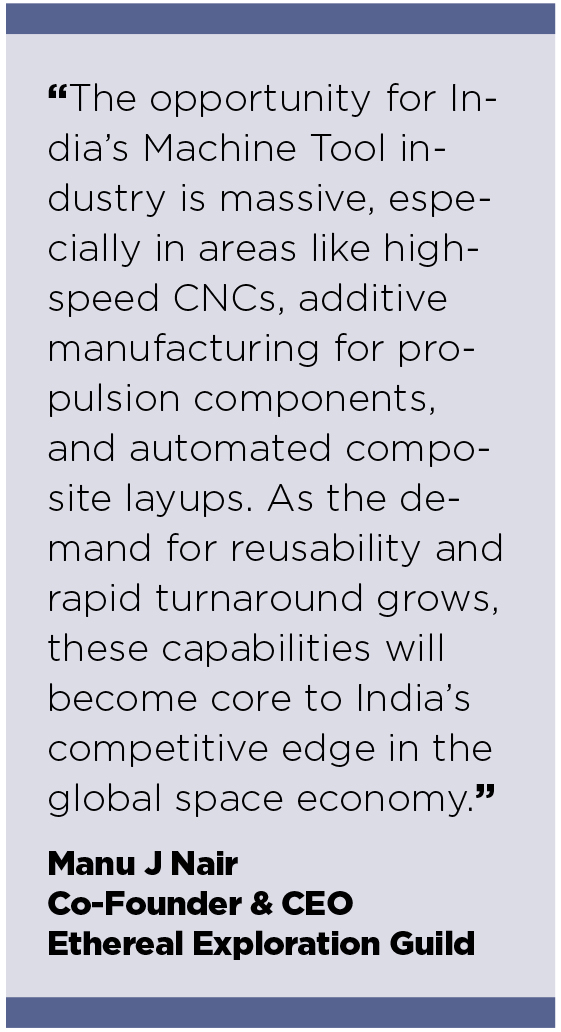
The tipping point came from a mix of hard economics and engineering realism. Most people associate space with cutting-edge tech, but orbital launch today is still a single-use industry. Launching a rocket and letting it fall into the ocean is like building a Boeing 747, flying it once, and scrapping it. That doesn’t scale.
We recognized early that true reusability—not just partial booster recovery—is what shifts the equation. The economies of scale, particularly in the medium-lift segment, which currently accounts for 91 percent of the commercial market, made the decision clear. By designing Razor Crest Mk-1 with full reusability in mind from day one and integrating modular development strategies, we are able to reduce the cost per flight drastically.
The key features of the rocket that enable long-term commercial demand are:
| Most people associate space with cutting-edge tech, but orbital launch today is still a single-use industry. Launching a rocket and letting it fall into the ocean is like building a Boeing 747, flying it once, and scrapping it. That doesn’t scale. |
US$ 350-US$ 2000 per kg: 1/35th [or] 1/6th of the Global Launch Price Average.
72 to 96 Hour(s) Turnaround Time: This aims for rapid turnaround time for refurbishment, partial replacement, and propellant loading will position us as a game-changer.
16 Orbit Insertions: This will enable us to operate with multiple customers in a single launch, allowing them to avoid the need for deployment at a specific orbit.
You operate from a 700,000 sq ft facility dedicated to Upper Stage Engine Testing, which is going to be India’s largest privately developed Engine Testing Facility. How is it helping speed up development and validation cycles?
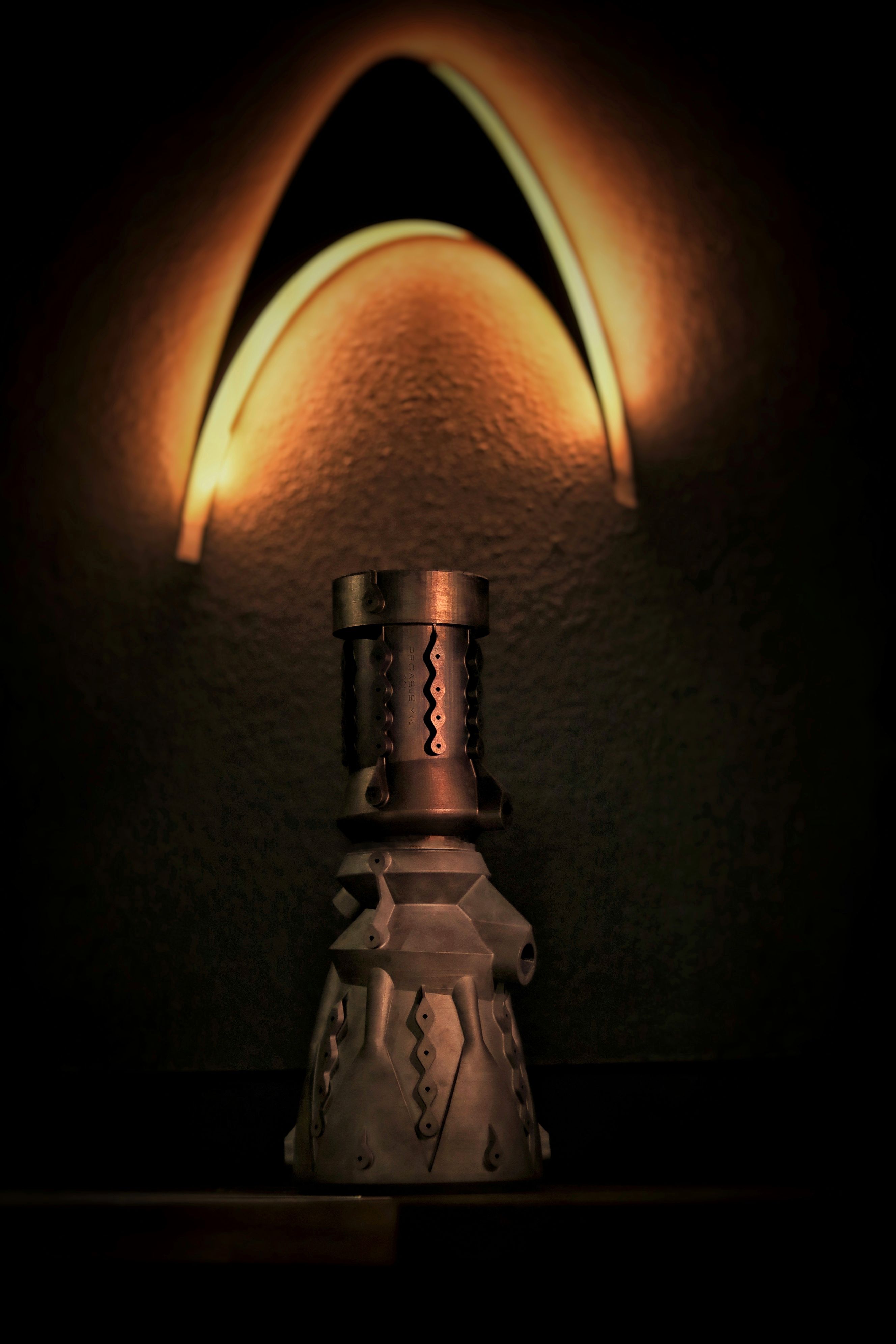 |
|
India's First Reusable Rocket Engine |
These facilities are critical to our vision of rapid turnaround and rigorous testing. Having in-house access to a full-scale upper-stage engine testing setup has enabled faster subsystem validation and a compressed iteration loop, directly improving our readiness timelines. In particular, the capability to run high-pressure RP-1/LOX engines at scale has been a bottleneck across India’s private sector. This type of infrastructure simply doesn’t exist anywhere else in the country today. As part of our development, we’ve already built the highest pressure-rated RP-1 skid in India, tailored specifically for our upper-stage engine needs. This not only gives us full control over the test environment but also dramatically reduces dependency on external facilities, enabling week-on-week progress rather than month-on-month cycles.
India currently holds about 2 percent of the global space economy. In your view, what are the most crucial policies, technology, or infrastructure shifts needed to push this to 10 percent by 2030?
India is on a strong upward trajectory. With the opening of the Space sector, a new wave of private space companies has emerged, backed by progressive policy moves, like the establishment of IN-SPACe, liberalization of FDI norms, and clearer regulatory pathways around launch operations and satellite licensing.
The next leap will come from strengthening infrastructure and supply chain readiness. The ecosystem needs more high-throughput manufacturing, testing, and AIT facilities that can support diverse private missions. That momentum has already started, whether it’s new testbeds, private launchpad plans, or specialized industrial parks in progress.
Overall, the foundation is being laid well. The focus now is on scaling capacity and executing at speed, and we believe India has all the ingredients to make that leap from 2 percent to 10 percent.
What role do you see EtherealX playing in the broader ecosystem of launch infrastructure in India, particularly in creating scalable and diversified access to orbit?
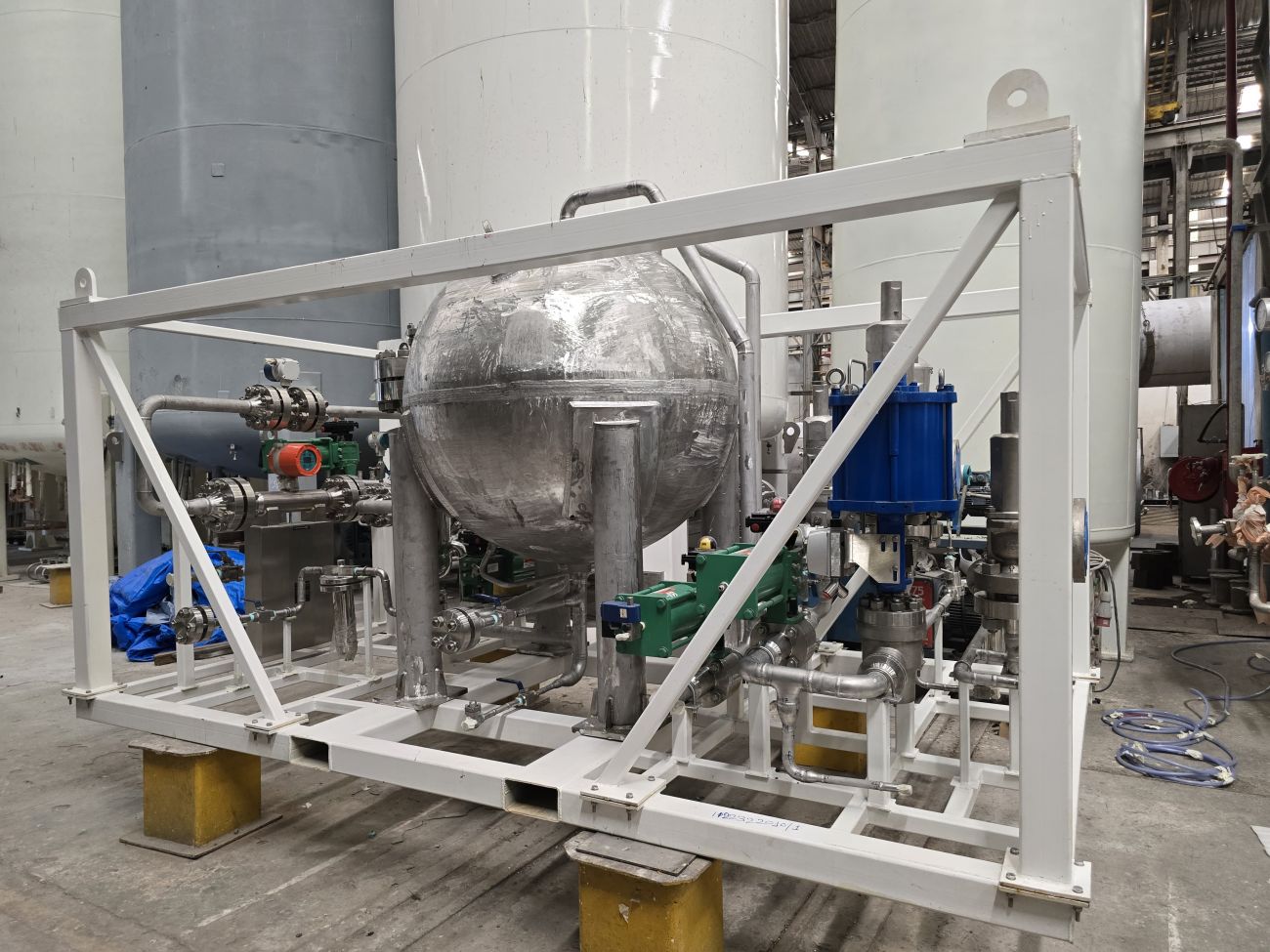 |
| India's Highest Pressure Rated RP-1 Test Setup |
EtherealX is building core infrastructure for Razor Crest Mk-1, including India’s largest privately developed engine testing facility and a full-scale Assembly, Integration, and Testing (AIT) facility pipeline. These are not just internal assets—they’re foundational pieces of national infrastructure.
Once operational, we intend to lease out these facilities to other space companies as well, enabling shared access to high-quality infrastructure. This is key to growing India’s spacetech ecosystem in a capital-efficient way—reducing duplication while increasing throughput and mission diversity.
Our role is to enable fast, affordable, and frequent launches—and to help create the physical infrastructure that makes space more accessible for everyone building in this sector.
There’s increasing discussion around the ineffectiveness of current space education systems in India. What gaps have you observed, and what kind of educational reforms or partnerships would you like to see?
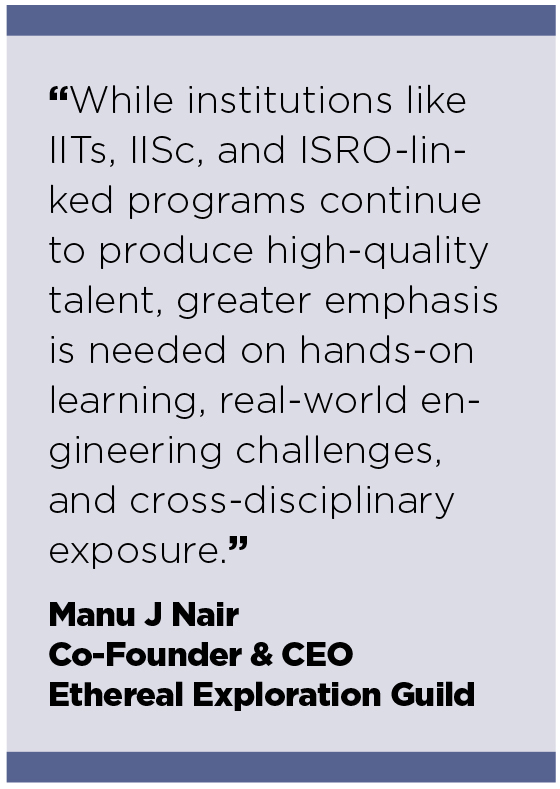
India has a strong academic base in science and engineering, but space education still needs to grow beyond theoretical knowledge to match the complexity and pace of the evolving spacetech sector. While institutions like IITs, IISc, and ISRO-linked programs continue to produce high-quality talent, greater emphasis is needed on hands-on learning, real-world engineering challenges, and cross-disciplinary exposure.
With the rise of startup activity and media buzz, there’s also a growing tendency to prioritize marketing narratives over a deep understanding of core systems, physics, and engineering rigor. As companies mature, the reality of what works will become clearer, but education must stay anchored in fundamentals. It should equip students to critically evaluate technologies, not just for their relevance or hype, but for their technical soundness, feasibility, and alignment with broader regulatory and operational frameworks.
What should we expect from EtherealX in the next 12–18 months—any upcoming tests, partnerships, or key breakthroughs you would like to share with our readers?
We’re currently deep into testing and subsystem validation, with propulsion and recovery systems at the forefront. Multiple partnerships are already in the pipeline, across sovereign customers, key supply chain players, and insurance stakeholders.
We’ve also secured over US$ 130 million in commercial launch agreements—well ahead of our first flight. The coming year will see major expansions in testing infrastructure, regulatory clearances, and the setup of our private AIT and launch preparation systems.
Could you please shed light on the kind of machining or precision engineering capabilities you're deploying, and what opportunities this creates for India’s Machine Tool industry?
We haven’t yet invested in in-house machining or heavy manufacturing, as much of our precision engineering is currently outsourced, largely outside India. However, as we move towards production scale, we’re working closely with both domestic and international partners to bring this capability home.
| EtherealX is building core infrastructure for Razor Crest Mk-1, including India’s largest privately developed engine testing facility and a full-scale Assembly, Integration, and Testing (AIT) facility pipeline. These are not just internal assets but also foundational pieces of national infrastructure. |
The opportunity for India’s Machine Tool industry is massive, especially in areas like high-speed CNCs, additive manufacturing for propulsion components, and automated composite layups. As the demand for reusability and rapid turnaround grows, these capabilities will become core to India’s competitive edge in the global space economy.
 |
SOUMI MITRA |




 Facebook
Facebook.png) Twitter
Twitter Linkedin
Linkedin Subscribe
Subscribe